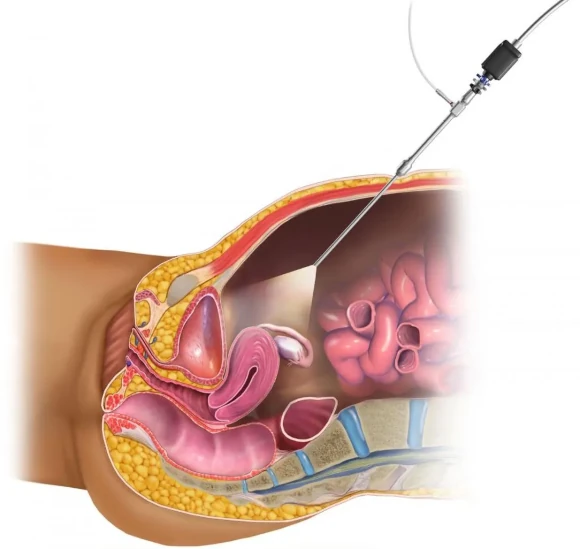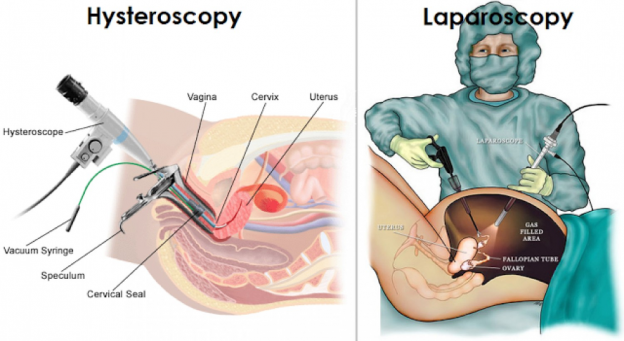Laparoscopy

Laparoscopy is one of the diagnostic tools used to explore and evaluate unexplained causes of infertility in women.
By looking at the reproductive organs, the doctor can identify the problem in conception.
Let us understand the laparoscopy procedure and conditions when it is beneficial.
In a laparoscopic procedure, the surgeon makes two to three very tiny cuts in the abdomen to insert probes and other surgical instruments. These instruments are thin, fibre-optic tubes fitted with a light, camera, and other surgical equipment.
A laparoscopy procedure allows the doctor to see and, if necessary, correct the problem without making a larger incision that requires a longer recovery time and hospital stay.
This procedure is also known as minimally invasive or key-hole surgery.
After giving anaesthesia to the patient, the doctor makes tiny incisions and inserts a probe with the camera to peek into the reproductive system inside the woman’s body. He/she examines the structure of the internal organs like the uterus, fallopian tubes, ovaries, etc. Certain kinds of abnormalities observed will be corrected surgically.
Hence, laparoscopy is used for infertility treatment in women.
For which health conditions laparoscopy will benefit?
Laparoscopy can help a doctor diagnose many conditions that affect fertility, such as:
- endometriosis
- Blocked fallopian tubes
- Ovarian Cysts
- Fibroids
- Other abnormalities of the reproductive system
Besides, if a woman has pelvic pain, diagnostic laparoscopy can determine the source of pain and possibly treat it. Laparoscopy can help in conducting the biopsy of any suspicious growth or cysts. Ectopic pregnancy can be treated with the laparoscopy method.

What are the advantages of Laparoscopy in Infertility Treatment?
- less invasive method
- lower risk of infection
- smaller scars
- the possibility of correcting the issue during surgery
- Faster recovery and shorter stay in hospital
When is Laparoscopy done?
Laparoscopy procedure helps in diagnosis and treatment of:
- Infertility in women
- Chronic pelvic pain evaluation
- Pelvic tumours
- Pelvic inflammatory disease (PID)
- Genital tuberculosis (TB)
- Ectopic pregnancy
- Endometriosis
- Fibroids
- Blocked tubes
- Pelvic adhesions (Due to any previous surgeries)
- Ovarian cysts
- Polycystic ovaries for ovarian drilling
- Vente suspension and treat prolapsed uterus
- Burch procedure for urinary incontinence
- Tubal ligation
- Tubal pathology like hydrosalpinx removal before IVF-ET
Is Laparoscopy a major procedure?
No. It is a day-care procedure done under general anaesthesia. Usually, it takes between 20 minutes to 2 hours, depending upon how much operative corrective work is required. A complicated case could take up to 4 hours or more.
The woman is generally discharged from the hospital on the same day of the surgery unless she has undergone some major operative procedure. She will usually need rest for 1-2 days. Mild to moderate pain may last for up to 7 days after the procedure.
What are the risks involved in Laparoscopy?
Every surgery has some risks. But, when performed by expert doctors, these risks are reduced.
Complications associated with laparoscopic surgery include the risk of damage to the bladder, ureter, bowel, and blood vessels.